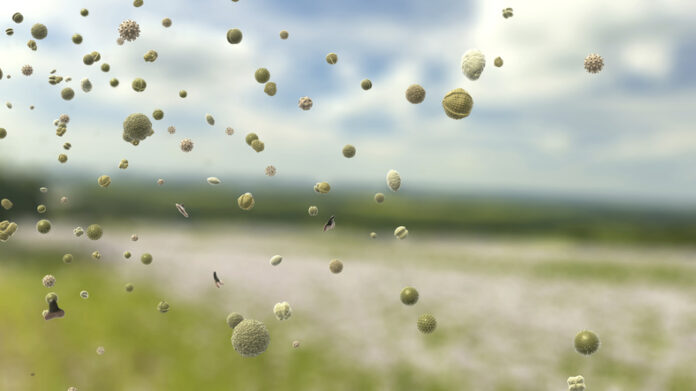CHICAGO (WGN) — Think of it as the perfect storm: High grass pollen counts combined with the high energy of a spring storm can create a formula that leads to deeper problems than just itchy eyes and sneezing.
Doctors issue a warning: Watch out for thunderstorm asthma. With everything already in bloom, spring allergy counts remain at high levels.
“When we look around at all the trees, there are little catkins or things hanging from the trees, and that is what produces pollen, so naturally they will be released into the air,” said Loyola Medicine allergist Dr. Rachna Shah.
Below all those new buds, there’s grass that also produces pollen. But it’s a more fragile structure compared to the heartier version produced by trees. That means the particles can break up more easily. And they do, particularly during thunderstorms.
“The thought is not only because there is more humidity in the air, but there is also these warmer drafts of air that will pull the pollen up into the cloud level. And then at the cloud level, they are surrounded by so much humidity, and there is a lot of different electromagnetic stuff that is going on with lightning and other things, that cause these pollen to burst open,” Shah said.
Microscopes show what was once 25 to 30 micrometers reduced to three after rain, lightning and strong winds.
“Larger pollen granules, what we normally see on days like today, when we are exposed to them, they settle in our nasal passages, they settle on our eyes and so we have itchy nose, sneezing, itchy eyes,” Shah said. “But these teeny tiny fragments, we can breathe them in deeper into our lungs. And so that can cause almost an allergic reaction in the lungs that presents as asthma.”
Asthma causes difficulty breathing, wheezing, and shortness of breath. Severe symptoms that can be life-threatening. Patients should be prepared for the rare weather phenomenon that occurs between mid-April and the end of May, when grass pollen is prevalent.
“Having your rescue medications, being as good as you can with your asthma, as well as controlled as possible during this time of year,” Shah said. “Grass, generally speaking, really around Memorial Day, we see it peak. We’re already seeing high levels, so it’s going to be an intense and tough season.”
Patients with a history of asthma, grass allergy, or worsening allergies are at higher risk for the rare phenomenon.
